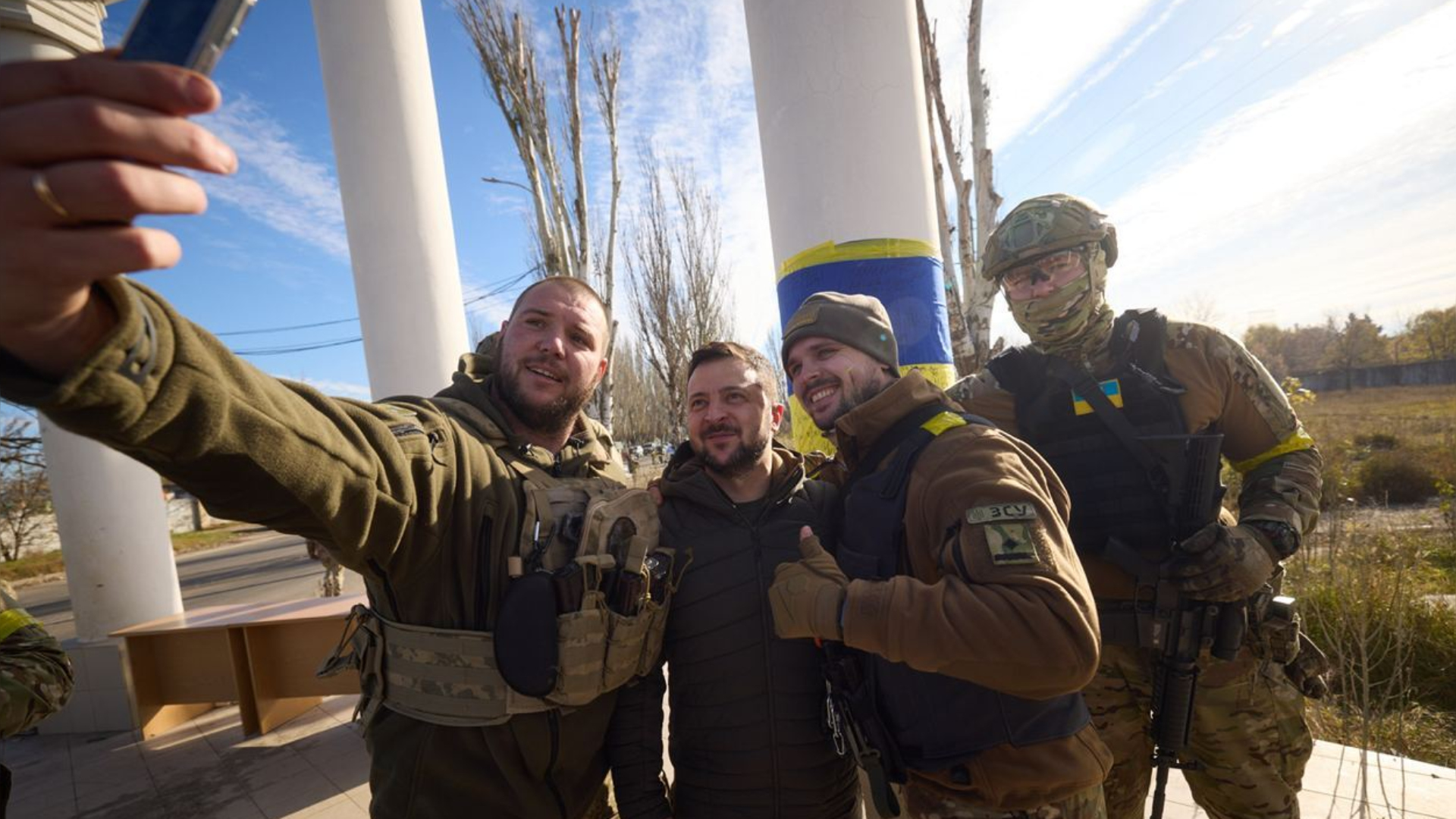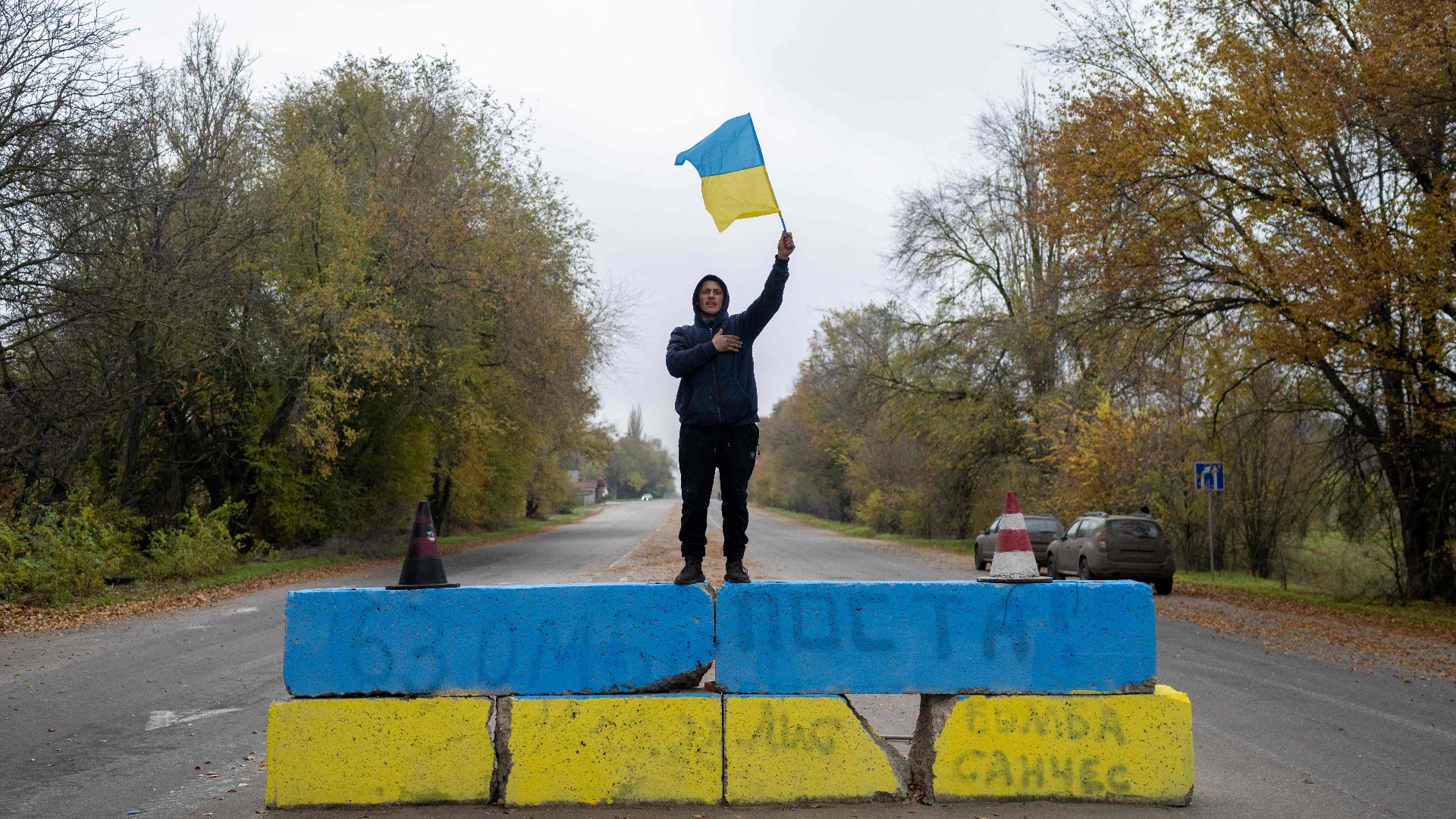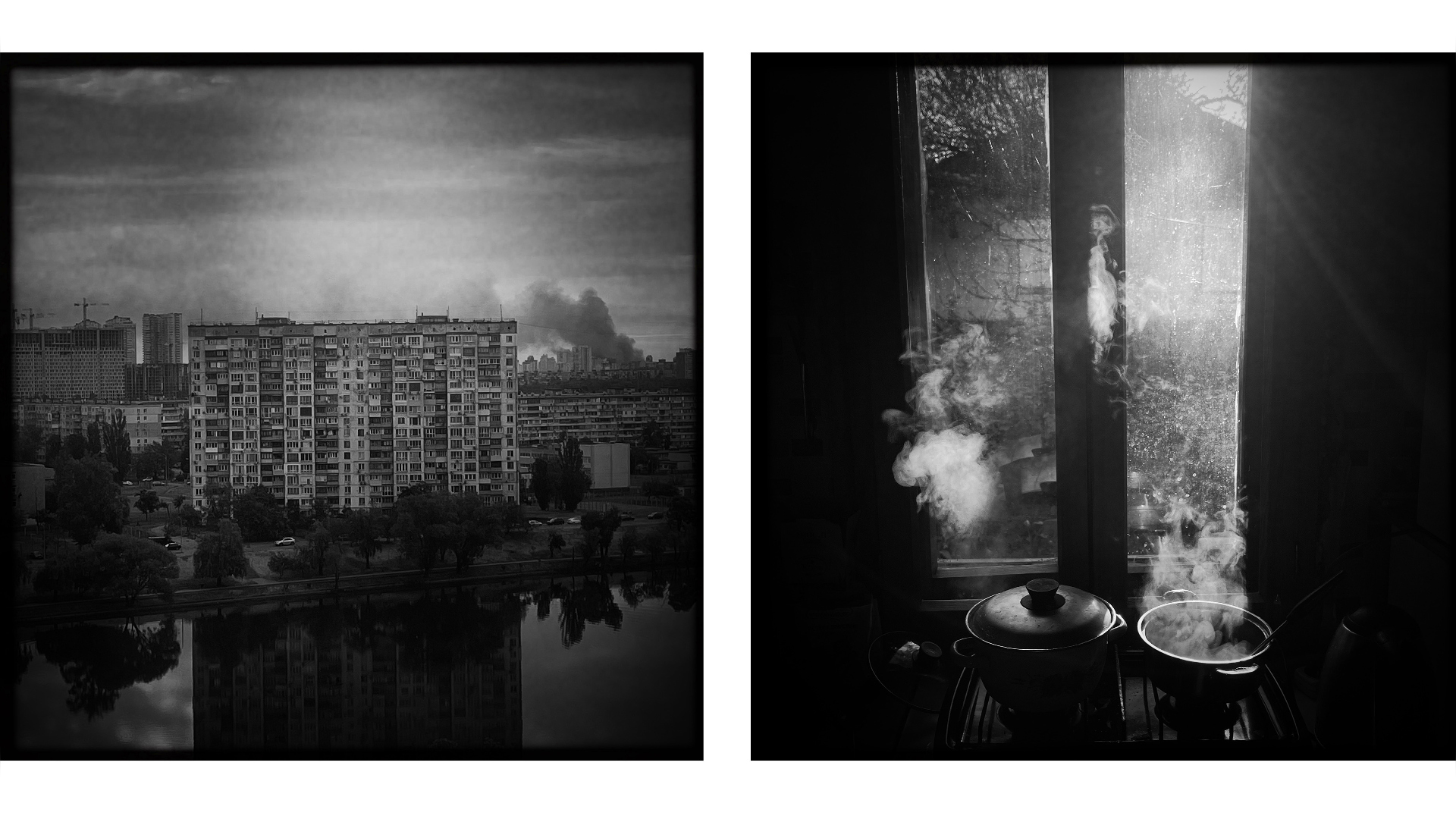TIME journalist Simon Shuster first met Volodymyr Zelensky in spring 2019, just before the actor became president of Ukraine. During the first year of the Russian invasion, Shuster was given unprecedented access to Zelensky and his inner circle – including, in November 2022, a trip to the liberated but devastated city of Kherson…
The invitation from the president’s office arrived: get ready for a trip, his aide wrote in a text message, and pack a toothbrush. He gave no details about the destination or how we would get there, but it wasn’t difficult to guess.
From everything Zelensky had revealed of himself since the invasion, it was obvious he would want to reach Kherson as soon as possible. Right up until our departure the following night, his bodyguards urged him to wait. The Russians had destroyed the city’s infrastructure, leaving it with no water, power, or heat. Its outskirts were still littered with landmines. Government buildings were rigged with trip wires. On the highway to Kherson, an explosion had collapsed a bridge, rendering it impassable.
As they fled, Russians were also suspected of leaving behind agents and saboteurs who could try to attack the presidential convoy, assassinate Zelensky, or take him hostage. There would be no way to ensure his safety on the central square, where crowds had gathered to celebrate their liberation. It was within easy range of Russian artillery, and a hypersonic missile fired from the Black Sea would take a few minutes at most to arrive. “My security was one hundred per cent against it,” the president told me of the trip. “It’s a big risk, and, on my part, a bit reckless.”
Then why do it? The Russian goal at the start of the invasion had been to kill or capture Zelensky and decapitate his government. Why give them such an easy chance to strike at the moment when the Russians were at their angriest and most humiliated?
The obvious reason had to do with the information war. By rolling right into the city that Putin still claimed as his own, the leader of Ukraine would blow a hole right through the narratives of conquest and imperial glory that Russian propaganda had been using for months to justify the war. Zelensky’s visit would deepen the embarrassment of the Russian retreat and strengthen the Ukrainian will to carry on through the winter. It would also degrade the credibility of Putin’s nuclear threats, thus weakening the last claim Russia has to being a global superpower.
But these were not the reasons he gave me for the trip. “It’s the people,” Zelensky told me. “Nine months they’ve been under occupation, without light, without anything. Yes, they’ve had two days of euphoria over their return to Ukraine. But those two days are over.”
Soon the long road to recovery would come into view, and many of them would want a return to normalcy much faster than the state could deliver it. “They are going to fall into a depression now, and it will be very hard,” Zelensky said. “As I see it, it’s my duty to go there and show them that Ukraine has returned, that it supports them. Maybe it will give them enough of a boost to last a few more days. But I’m not sure. I don’t lull myself with such illusions.”
Our rendezvous point on that Sunday night was in the usual spot outside the firehouse, a part of central Kyiv that was blacked out by the time the photographer and I arrived. Candles flickered in apartment windows, and people out walking their dogs used their phones to light the sidewalks. Even the central bazaar was in darkness, though the vendors inside still sold fresh fruit and cheese, pickles and pork belly by the glow of electric lanterns. When we passed them, lugging our bulletproof vests and helmets, we made sure to grab some food for the road. Bring snacks, one of Zelensky’s aides warned in a text message. These trips tend to be very disorganised.
You wouldn’t know it from the black van that arrived to pick us up – punctually, as agreed, at 7.30pm – and brought us through the military checkpoints to the president’s compound. “Do you have documents on you?” asked one of the guards as he looked me over. “Good, then we’ll know how to mark your grave if you fall behind the convoy.” The joke made his comrades double over with laughter.
By the time our convoy left the compound, the streets had emptied out, allowing us to coast through the city centre. The military curfew would not take effect for another two hours, but only the brave risked driving when many of the traffic lights went dark during the blackouts. Near the train station, we turned onto some rutted back roads and crept along until a group of soldiers appeared in the headlights. Behind them, among mounds of construction material, a few train wagons idled at the edge of an industrial lot. The only light came from the open doors of a sleeper car, where an attendant stood smiling, dressed in the uniform of the state railway company.
Zelensky’s aides and staffers had never seen reporters on the presidential train before, and the novelty amused them. Their only request was that we not take photos or publish details that could allow someone to identify Zelensky’s private car. “It’s our only mode of transport,” one of them explained. “If the Russians find it, that’s a bullseye.”
The train took nine hours that night to travel the length of Ukraine from north to south. Early in the morning, as we approached the city of Mykolaiv, the fog in the eastward-facing windows enveloped the trees like gauze. The first image of war appeared at a rural junction, where a few dozen soldiers worked on the tracks, loading a handful of tanks onto platforms. The machines looked ancient, like relics from World War II, while the troops resembled earnest boys clambering around the turrets.
The train soon stopped in a dusty lot full of squat garages and bungalows. A few dozen commandos stood by as we jumped off and ran over to a convoy of vans. “Good morning,” I said to one of the soldiers.
“Move faster,” came his reply. The liberated city, inaccessible to railway traffic, took about an hour for the convoy to reach even as our drivers raced at full speed, shoving other cars to the shoulder. Near the edge of the Kherson region, the collapsed bridge forced us to turn off the highway and into the dried-up riverbed below. Sappers there used metal detectors to scan for landmines and unexploded shells. “Look there,” said the voice on the driver’s radio. “They destroyed an ambulance.”
Its husk lay in the wreckage of the bridge, warped and blackened beyond recognition. Every road sign and building for several kilometres was torn up with bullets, shells, and shrapnel, and it soon became obvious why. We were passing the infamous kill zone around Chornobaivka, near the airport that serves Kherson.
This was the spot where the enemy advance in the south had been stopped. Dozens of their broken vehicles stood around in the nearby fields, resembling old toys left behind in a sandlot. Several months had passed since the fiercest fighting in the area, but crows still circled over the expanse of wreckage, looking out for meat to pick from human bones.
Nobody informed the people of Kherson that the president was on his way to visit. News of his arrival remained a state secret even among the military officers stationed in the area. Still, halfway through the morning, the security measures around the central square made it obvious that something dramatic was about to happen.
For two days, crowds had filled the square to celebrate Kherson’s liberation, drawing victory signs on the buildings and taking photos with the Ukrainian troops who wandered around in a daze. Now police had cordoned off the area, allowing only a few dozen onlookers to stand at the square’s western edge, near the movie theatre. On the opposite side, in front of the regional government headquarters, rows of soldiers stood in loose formation with rifles slung over their shoulders.
The first explosion sounded a few minutes later, and everyone froze, looking up at the sky for a shell to come arcing down. Then came another boom. It sounded closer than the first, the sonic wave crashing against the buildings. Someone suggested it was outgoing artillery fire, though this seemed more like an optimistic guess.
The Russians had retreated to the left bank of the Dnipro River, which now marked the front line about a mile away. The blasts continued to sound, but Zelensky, standing and waiting next to his Land Cruiser, did not seem bothered by them. He declined as usual to wear a helmet or bulletproof vest.
At the edge of the square, the soldiers had installed a Starlink Internet terminal, plugging its satellite dish into a diesel generator. The president took out his phone when he saw it and asked for the Wi-Fi password. Most of the people around him were armed with assault rifles. But this was his weapon, the late-model iPhone Zelensky used to wage the biggest land war of the information age.
Soon the media buses arrived, and a few dozen reporters rushed onto the square and set up a line of cameras. Zelensky kept the ceremony brief, not wanting to annoy his guards by spending longer than necessary within range of Russian cannons. They would later inform him that, high above his head on the square, too high for any of us to notice at the time, an enemy reconnaissance drone kept watch, feeding images back to the Russian troops on the other side of the river.
It watched Zelensky raise the Ukrainian flag over the square and sing the national anthem, his hand over his heart. It watched him strut to the waiting bank of television cameras to answer a few of the reporters’ questions. The first one cut right to the point – with Russia apparently ready to negotiate, is this the beginning of the end of the war? Zelensky repeated it slowly to the cameras, buying himself a few moments to consider his response.
“Is it the beginning of the end of the war?” the president said. “You see our strong army. We are step by step coming to our country, to all of the temporarily occupied territories.” Then came another question from the scrum: What’s next? “Not Moscow,” Zelensky said with a smile. “We are not interested in territories of another country. We are interested only in de-occupation of our country, of our territory.”
Besides, he said, it would make no sense to negotiate with an enemy that talks of peace while bombing civilians. “We don’t believe Russia,” Zelensky said. “They are tricking all the world. That’s why we are going forward.”
An extract from The Showman, by Simon Shuster, published by William Collins



